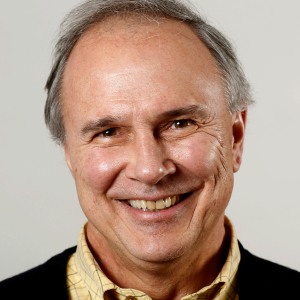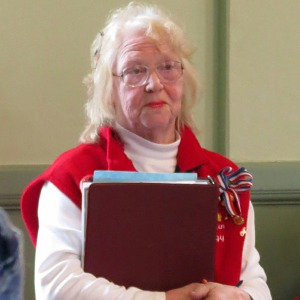A Life: Timothy Matson ‘was always a sort of rebel at heart’
| Published: 11-14-2023 9:27 AM |
STRAFFORD — Timothy Matson, a writer and naturalist from Strafford, owed some credit for his path in life to the U.S. Army, though not in the way that some might imagine. After all, venturing to rural Vermont — where he would live for years without electricity and pursue activities that included water skiing on bare feet and building an urn — is not exactly a lifestyle promoted in military recruitment videos.
But in 1966, while serving as a news correspondent at Fort Bragg, Matson honed skills in photography and journalism that would forge his career.
Moreover, two years of restrictive military life helped to convince Matson to live by his own code. Shortly after leaving the Army, Matson — inspired by the back-to-the-land movement — moved to Vermont and purchased land in Strafford. He built his own house by hand and became a local expert in building and caring for ponds. He wrote articles and books on topics that ranged from ponds and the environment to home-brewing beer and the nature of death and dying.
To friends and family, his passion for life and his creativity seemed limitless. He was a lover of music, a gifted storyteller and “the life of the party” in any social gathering.
“It was hard to get him out of the house, but once he did, he’d be the life of the party,” his daughter Johanna Matson said. “He loved socializing, he could talk to anyone and everyone would get a kick out of (conversations with) him.”
Matson, who died peacefully in his home on Aug. 6 at the age of 80, was born in New York City on May 27, 1943. He was raised in Greenwich, Conn., where he lived with his parents, Harold and Ann Matson, and his three younger siblings.
Even in childhood, Matson displayed a penchant for adventure-seeking. Around the age of 8, Matson and his younger sister, Katinka, left home without notifying their mother and began walking down a nearby road.
Katinka Matson said she cannot recall how far they had walked, but they were found by a police officer on patrol, who ordered them into his car and returned them home.
Article continues after...
Yesterday's Most Read Articles
 Homeless Upper Valley couple faces ‘a very tough situation’
Homeless Upper Valley couple faces ‘a very tough situation’
 Kenyon: Constitutional rights should trump Dartmouth’s private interests
Kenyon: Constitutional rights should trump Dartmouth’s private interests
 Crane crash on Interstate 89
Crane crash on Interstate 89
 Upper Valley school notes for May 13
Upper Valley school notes for May 13
“We weren’t even running away,” she said. “We were just having an adventure.”
Matson attended high school at South Kent School, a private boarding school for boys in South Kent, Conn., and went to college in Winter Park, Fla. Though very bright, Matson disliked traditional classroom learning and was often more interested in exploring new hobbies, including water skiing and home brewing.
“I remember him talking about trying to make hard cider once in boarding school,” his daughter Mayellen Matson said. “It went totally wrong. They stole a container of apple cider from their cafeteria and put it in their closet, where they waited for it to turn into alcohol. Only they left it there too long, and it exploded all over their chapel clothes.”
Matson developed an interest in beer-making long before such home brewing became fashionable — or even legal. When Matson and co-author Lee Ann Dorr published their home-brewing guide, “Mountain Brew: A High-Spirited Guide to Country-Style Beer Making,” in 1975, brewing beer at home was still an unlawful activity in the United States.
In 1966, Matson was drafted into the Army. Working as a news writer at Fort Bragg, Matson learned photography, an activity that he would embrace for the rest of his life, Mayellen said. That activity shaped a book he published in 1978, “Pilobobus,” a photography collection of the Pilobobus dance company, a modern dance and theatrical organization that formed at Dartmouth College in 1971.
The collection was published by Random House and received two awards from the American Institute of Graphic Arts.
After two years of military duty, Matson returned to civilian life, moving to New York City where he could be close to the publishing industry. But a trip to Vermont in 1970, where he encountered the back-to-land movement, had a profound effect upon Matson.
A year later, Matson bought 45 acres of wooded land in Strafford and built his first home — completely by hand, sourcing the lumber from trees on his property.
“Even from a young age, he was always a sort of rebel at heart — and I think moving to Vermont was part of that,” Mayellen said.
“And I think that being sent off to a rigid boarding school and then being drafted into the Army during Vietnam, that (those experiences) made him say, ‘Screw societal norms. … I’m going to go make the life I want for myself.’ ”
Ellen Langtree, Matson’s friend and ex-wife, remembered Matson’s home fondly. Langtree, a painter, had met Matson in 1976 when she was waiting tables at Stone Soup Restaurant in Strafford.
“He invited me to dinner at his cabin,” Langtree said. “And he didn’t have electricity, so it was lit with kerosene lights. And there were very tall windows, and it was such an artistic cabin. And I was sold.”
Matson and Langtree married in 1980, holding the ceremony by a pond that Matson had built on his property.
“We both needed to live close to nature,” Langtree said. “We carried water (from the pond) and heated it in the woodstove and we had an outhouse. Tim grew the vegetables, and I raised the meat animals. We were really part of the back-to-the-land lifestyle, and we loved it.”
Dominique and Marty Mintz, who were friends and neighbors of Matson in Strafford, said he was dedicated and uncompromising when it came to his values and way of living.
“He had a handmade house, which we had a hand in helping him build — everything was done (by hand),” Dominique Mintz said. “He cut the trees down; the lumber was his own. … Everything that Tim did and made, he wanted to do from the earth.”
Matson’s passion for pond building also reflected his desire to intertwine human creativity with the natural world, Mayellen noted.
“I think learning about ponds and building ponds was another way of being more connected to the land and to find a way to work with nature, as opposed to working against it or changing nature for other human interests,” Mayellen said.
Matson wrote four books about pond-making and pond ecology and would offer his professional services to design and build ponds or as a consultant to pond owners.
Music was also among Matson’s loves, according to friends and family.
“He always had music playing, in the car or in the house, from Bob Dylan, the Beatles and Dr. John to the Beach Boys,” Johanna Matson said.
“He just came alive with music,” Mayellen Matson said. “Every time I would go to his house, it would end up with him at the piano. And you would just sit there and listen because it’s just beautiful to watch him do something that he loves so much.”
As a father, Matson was loving and supportive, his daughters said. As a freelance writer, Matson was regularly at home to send them off to school and to meet them at the bus stop in the afternoon.
“He was always encouraging of anything we wanted to do while also encouraging us to try new things (like sports or other activities),” Johanna said.
Matson would invent bedtime stories for his daughters, sometimes creating the story as he told it.
“He’d go into their room and make up stories about two little girls as the main characters (named Marylou and Susie) — and it was very sweet,” Langtree said. “I always told him he should write them down, but it was more of a spontaneous thing for him.”
In 2000 Matson published one of his most personal literary works — an exploration of death and mortality, “Round-Trip to Deathsville: a Year in the Funeral Underground.” In the book Matson weaves reflective musings about dying and existentialism with an examination of funeral and burial practices and Matson’s mission to build his own urn.
“It’s dark humor, but it’s relevant,” particularly today with Vermont’s aging population, said Matson’s friend, Joe Sherman.
“I guess you would call it semi-autobiographical,” Mayellen said. “It was all based on his experience of going around Vermont and talking to different people in the (funeral and burial) industry. And he was reaching midlife (and) having this moment of realizing his mortality and just thinking about life and death. So it was his way of exploring and figuring that out.”
Matson’s health appeared to be in decline in his final year, though Mayellen said her father never disclosed any specific issues. He also was adamant about dying at home, without medical intervention.
“And that was very much in line with his personality,” Mayellen said. “He was a stubborn person who just wanted to live the way that he wanted to live. And he loved that land, and he loved that house that he built. And honestly, forcing him to go to a hospital or into a nursing home just wouldn’t have been the way that he wanted to go.”
Robert Barnett, a friend of Matson, summarized his friend in a memory.
Barnett was helping Matson build his house. The entire property seemed incomplete, Barnett said. The house was mostly built, but the porch was without a railing. The henhouse was built but there was no yard enclosure, so the chickens were wandering freely. The pond site was dug but without water.
“Tim looked out at this happy chaos with the satisfaction of a baron surveying his domain,” Barnett said. “The insane amount of work that still had to be done was in the future. What was important now was the few moments of leisure with a friend and the wonder of this jumble of life he had strewn about.
“I think the capacity to forget what’s to come and to grab bits of peace when they’re offered to us goes a long way to making life livable,” Barnett added. “Tim seemed able to do this in a remarkable fashion.”
Patrick Adrian may be reached at padrian@vnews.com or 603-727-3216.
CORRECTION: The sister of Timothy Matson is Katinka Matson. Her first name was misspelled in a previous version of this story He built an urn while writing his book “Round Trip to Deathsville.” A previous version of this story was incorrect in the type of artifact he built. Matson created stories for his daughters about a pair of girls named Marylou and Susie. The characters’ names were spelled incorrectly in a previous version of this story.




 Kenyon: No respite from conflict in Upper Valley
Kenyon: No respite from conflict in Upper Valley A Life: Peggy Thorp ‘was critical to getting it all done’
A Life: Peggy Thorp ‘was critical to getting it all done’
